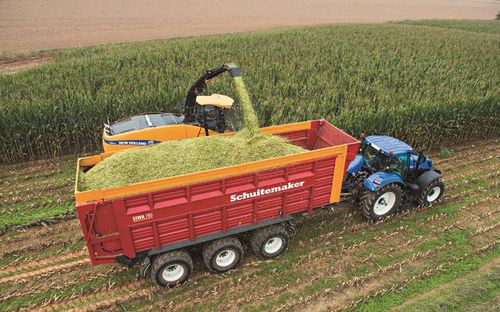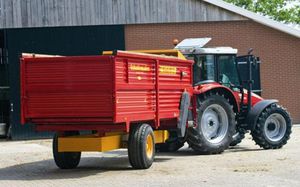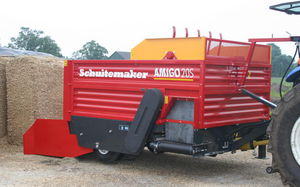
- Farm Infrastructure
- Waste management
- Loader wagon
- Schuitemaker Machines B.V.
Loader wagon SIWA Series2-axlesilage15 ton

Add to favorites
Compare this product
Characteristics
- Construction
- self-loading
- Number of axles
- 2-axle
- Application
- silage
- Payload
- 15 ton, 19 ton, 24 ton, 34 ton
- Brake system
- with mechanic braking
- Other characteristic
- self-unloading, push-off
Description
The silage wagons marketed under the name of Siwa are knownfor their soundness and reliability. The Siwa has an all-steel body, reinforced side panels and a solid cage construction. This makes the machine suitable for harvesting both grass and maize. The hydraulic tailboard opens under a 90-degree angle for fast discharge. The slanted front panel facilitates optimal loading, by the start of cutting maize parcels, and driving behind the chopper.
The new Schuitemaker silage wagon is the world record holder when it comes to unloading the wagon. It is possible to unload a Schuitemaker Siwa with distribution silage beaters and a good 48m³ of grass in the box in only 48 seconds nicely and evenly spread over the silage. That is about 1m³ per second, an absolute record!
With a perfect mix of reliable components, new production techniques and a modern design, the new Siwa Silage wagon is totally ready for the future. The robust and characteristic way that it is built by Schuitemaker makes the Siwa the powerhouse of silage wagons.
The Siwa with 4 mechanically driven wheels has been specially developed for extremely wet and difficult conditions. The Siwa has a PTO-driven gearbox in the bottom frame. From here there is a driveline to the front axle. A drive shaft runs from the front axle to the second axle. A standard feature of the mechanically driven SIWA is its hydraulic suspension. The gearbox is controlled from the tractor on which the controls are mounted.
VIDEO
Catalogs
FORAGE PRODUCTION
28 Pages
Other Schuitemaker Machines B.V. products
Agricultural machines
*Prices are pre-tax. They exclude delivery charges and customs duties and do not include additional charges for installation or activation options. Prices are indicative only and may vary by country, with changes to the cost of raw materials and exchange rates.







